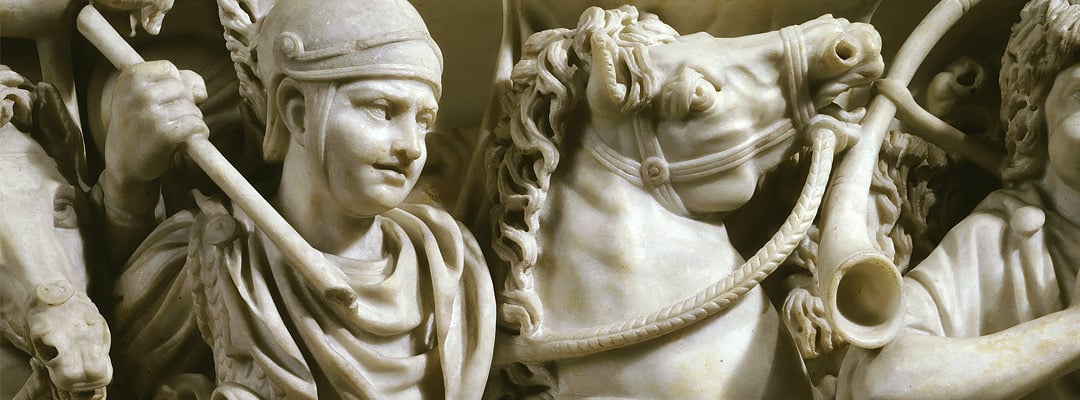The Mysterious Absence of Stables at Roman Cavalry Forts
How recent archaeological excavations on Hadrian’s Wall have revealed why it has always been so difficult to discover where Roman soldiers kept their horses.

TYNESIDE FINDS
Many barracks have been found in Roman cavalry forts, such as Chesters on Hadrian’s Wall, but few stables – and visitors often ask where the horses were kept. Until recently it was believed that there must have been separate stables, but these have only rarely been found. Now, thanks to recent excavations, we can understand why.
In 1998–2000 the first complete modern excavations of cavalry barracks on Hadrian’s Wall took place at Wallsend and South Shields. At both sites, each of the contubernia – the pairs of rooms into which barrack blocks were divided – contained a centrally placed, elongated pit in its front room. Corresponding with each front-room pit was a hearth in the rear room.
This arrangement was immediately recognised as exactly resembling that found in some Roman fort buildings on the Continent, where preserved hay and fodder showed that horses had been stabled in the front room. The pits, covered with boards or stone slabs, collected horse urine and kept the floor dry.
COMMUNAL LIVING
Such buildings had until then only ever been revealed fragmentarily and had been interpreted as stables. But the buildings at Wallsend and South Shields were – as their plans confirmed when revealed in their entirety – clearly barracks of conventional type, complete with end-buildings for officers.
They demonstrate conclusively that horses were accommodated in the same buildings as their riders, with the animals in the front rooms and their riders in the rooms behind. This, of course, meant that the horses would have been available for instant deployment – a military advantage that would be completely lost if the cavalry mounts were stabled or corralled elsewhere.
PERFECT FIT
The discoveries at Wallsend and South Shields made sense in another way too. Each front room – a square of at least 3.6 metres across, or 12 Roman feet – would have been able to accommodate three horses, close to their riders. In each rear room, therefore, slept three troopers.
A textbook cavalry barrack with ten contubernia would thus have neatly housed the 30 or so men and horses that are known to have made up the cavalry equivalent of a century – a ‘troop’ or turma.
MYTH BUSTER
A German archaeologist, Sebastian Sommer, had already predicted in 1995 that one day such combined stables and barracks would be shown to be the standard form of accommodation for Roman cavalry. His view was vindicated by the Wallsend and South Shields excavations. At a stroke, they resolved two mysteries: where the horses were kept, and why it had been so hard to identify separate stabling in Roman forts.
The elusive separate stables were, in fact, a myth, and since 2000 ‘stable-barrack’ features have been recognised by geophysical survey or excavation at many other forts in the Roman Empire.
NATURAL BOND
Many people find it difficult to believe that Roman cavalrymen and their horses would have lived in such close proximity.
But this archaeological discovery shows that we should overcome our modern preconceptions, and remember that these soldiers were the descendants of the barbarian horsemen from whom the Roman auxiliary cavalry had originally been raised.
There was a natural bond between these mounted warriors and their steeds. The trooper and his mount rode together and lived together in a tight-knit community, realising that, as the ancient writer Xenophon advised, ‘It is plain that in danger the master entrusts his life to his horse.’
By Nick Hodgson